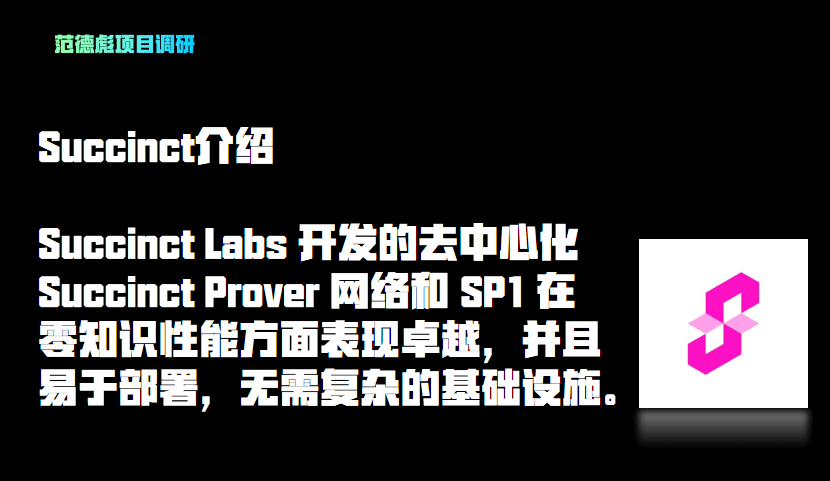😎 In the wave of Web3, DeFi, AI, cross-chain projects, and others are developing vigorously, but the application of zero-knowledge proofs often deters many projects due to complex operations. The emergence of Prove is like a ray of light, illuminating the path for these projects to conveniently use zero-knowledge proofs.
💡 Easy to Call: Zero-knowledge proofs are as simple as integrating an SDK.
The core goal of Prove is very clear: to enable any DeFi, AI, or cross-chain project to easily obtain 'mathematical-grade security' proofs. Project teams do not need to write complex circuits themselves or build validation networks; they only need to directly call the Succinct interface, just like integrating an SDK into an app, and a few lines of code can solve it. This convenience greatly lowers the application threshold for zero-knowledge proofs, allowing more projects to enjoy the security guarantees brought by zero-knowledge proofs.
🌐 Diverse Ecological Scenarios: Seamless connection to various needs.
Prove performs excellently in connecting ecological scenarios, with a wide range of application space.
- Cross-chain bridge access: Cross-chain platforms like Venus, Axelar, LayerZero can utilize Prove to generate reliability proofs for cross-chain operations. By using ZK technology, the asset state proof from chain A can be sent to chain B without intermediaries, making the cross-chain process more secure and transparent, solving the trust issues in cross-chain processes.
- Layer 2 user identity verification: For rollups/sidechains, when verifying the state or transactions submitted by users, the Prove API can be integrated. Proofs can be generated off-chain and verified on-chain, which significantly saves gas fees and offers high flexibility, making Layer 2 applications more efficient.
- AI / off-chain multi-signature verification: When running complex AI inference models off-chain and needing to verify results on-chain, there’s no need to run the entire chain. Results can simply be 'stamped' on-chain in ZK form. This provides a secure and efficient verification method for the combination of AI and blockchain.
⚙️ Underlying Mechanisms: Innovative and efficient operational mechanisms.
Prove's underlying mechanisms are full of innovation. It has built a decentralized bidding market, akin to 'ZK computing Uber'; whoever can provide lower fees and faster proofs will win the bid. This active competitive mechanism ensures the efficient operation of the entire network. Meanwhile, SP1 zkVM supports Rust/WASM, allowing developers to generate secure proofs using ordinary languages without delving into complex circuit designs, significantly lowering the development threshold. Additionally, through governance and incentive mechanisms, submitting proofs can earn rewards, Provers need to stake PROVE as collateral, and token holders can participate in proposals or voting, promoting the healthy development of the ecosystem.
🚀 Project Status and Future Prospects.
Currently, Prove has officially launched its mainnet, supporting various types of proofs such as chain bridges, order settlement, and zkML. Large companies like Polygon have also integrated Prove's cross-chain verification into their on-chain verification processes. Meanwhile, the number of submitted proof requests and Prover nodes is steadily increasing, with network activity continuously improving. In the future, as more projects are willing to pay for 'mathematical security,' Prove is expected to become the 'invisible foundational chain' within the Web3 backbone, providing solid support for the secure and stable development of the entire Web3 ecosystem.
@Succinct #SuccinctLabs $PROVE


